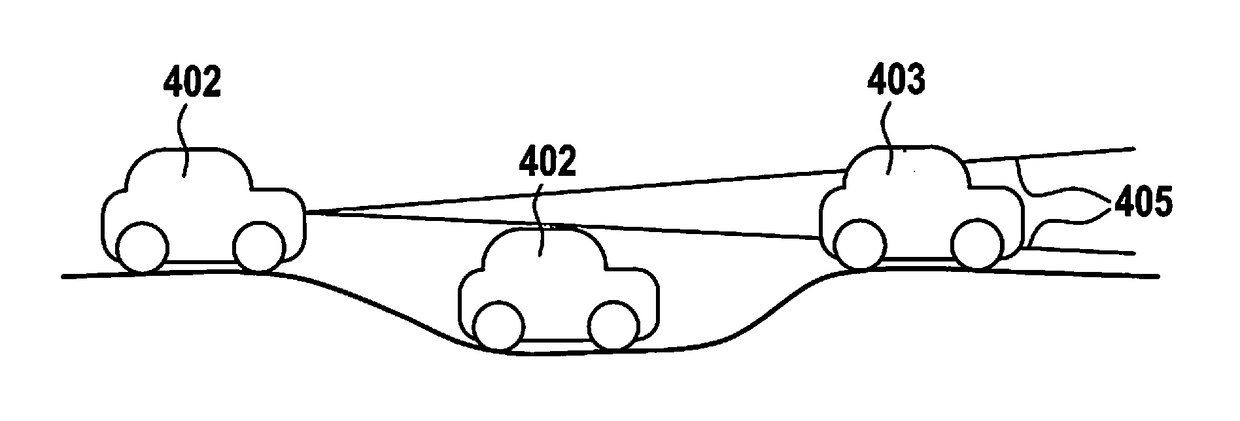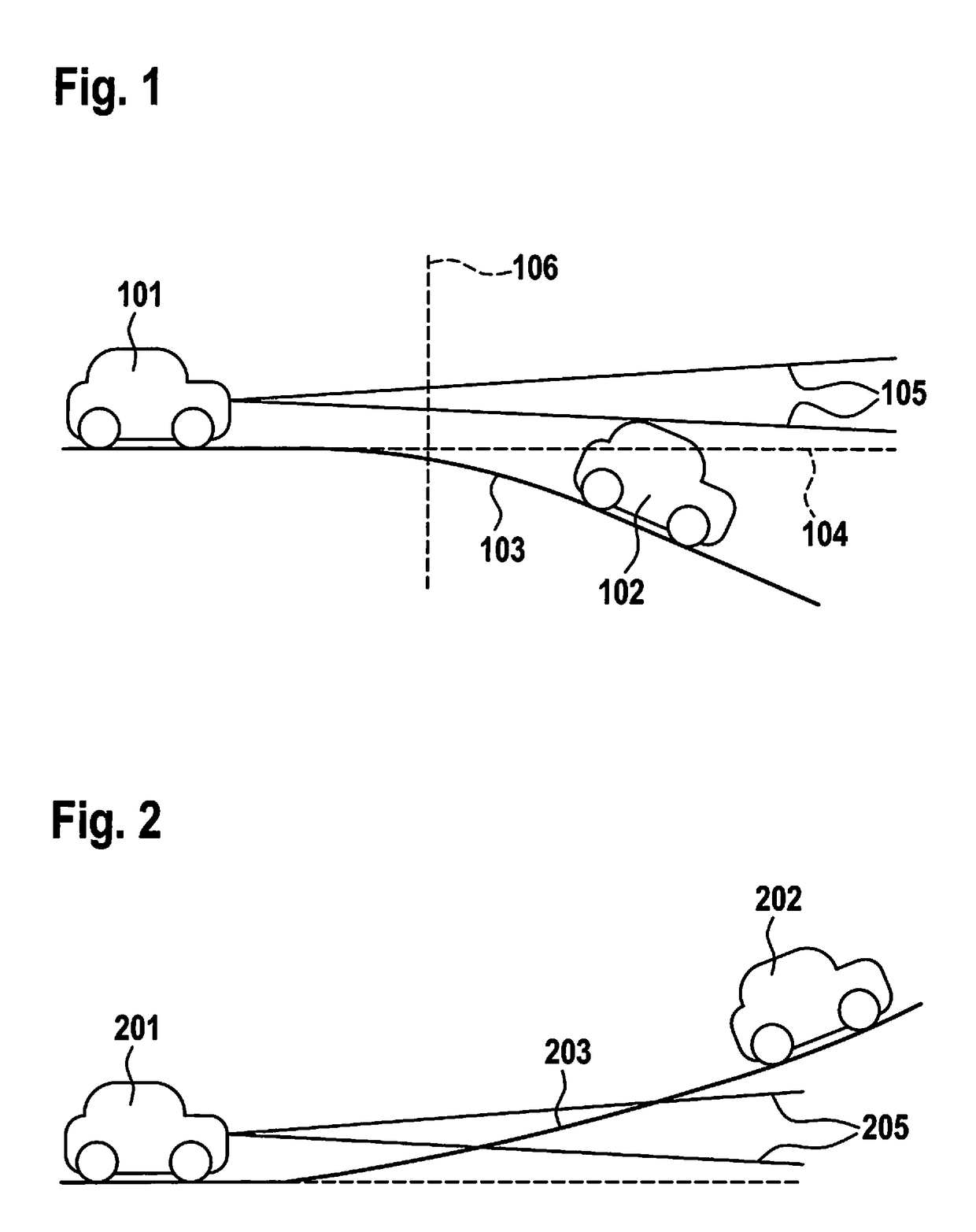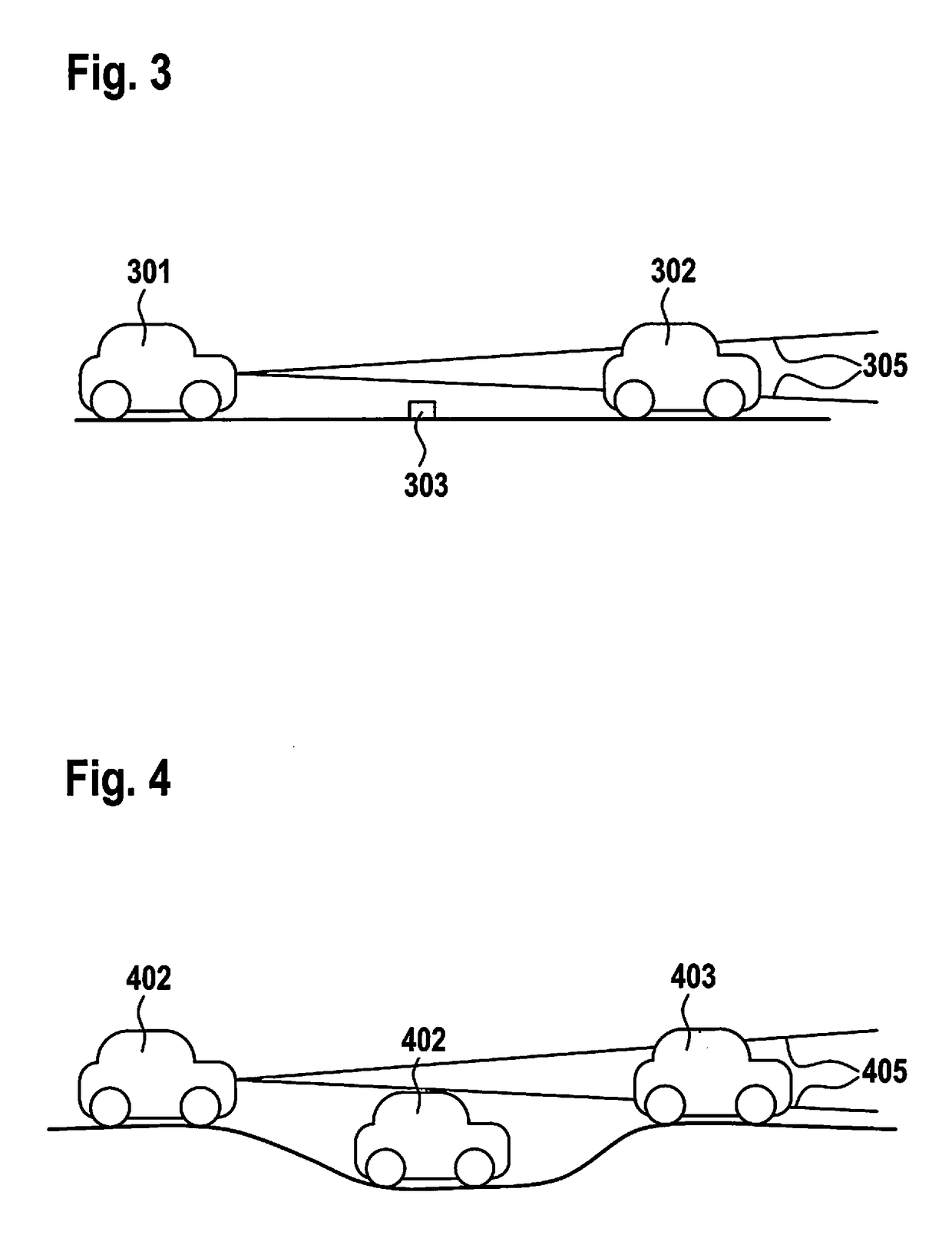Detection of an open area
a technology of detection and open space, applied in the direction of process and machine control, using reradiation, instruments, etc., can solve the problems of possible conflicts between the planned trajectory and the actual trafficable trajectory, and the data derived from the surroundings sensor system may change, so as to increase the safety
- Summary
- Abstract
- Description
- Claims
- Application Information
AI Technical Summary
Benefits of technology
Problems solved by technology
Method used
Image
Examples
Embodiment Construction
[0041]FIG. 6 shows one exemplary sequence of a method in in accordance with the present invention. In step 601, surroundings data 601a are recorded with the aid of the surroundings sensor system. In this example, a camera captures the area ahead of the vehicle.
[0042]In step 602, surroundings information 602a regarding the topology of the route section is obtained with the aid of a map which contains elevation information regarding the route section.
[0043]In step 603, surroundings data 601a and surroundings information 602a are utilized in order to generate an evaluation signal 603a of a route section with respect to the trafficability thereof. Surroundings information 602a is utilized in this case primarily in order to assess whether the route section to be evaluated is detectable / visible with the aid of the surroundings sensor system, i.e., the camera in this case. One exemplary situation is represented in FIG. 1, in which a preceding vehicle 102 has left detection area 105 of a fo...
PUM
 Login to View More
Login to View More Abstract
Description
Claims
Application Information
 Login to View More
Login to View More - R&D
- Intellectual Property
- Life Sciences
- Materials
- Tech Scout
- Unparalleled Data Quality
- Higher Quality Content
- 60% Fewer Hallucinations
Browse by: Latest US Patents, China's latest patents, Technical Efficacy Thesaurus, Application Domain, Technology Topic, Popular Technical Reports.
© 2025 PatSnap. All rights reserved.Legal|Privacy policy|Modern Slavery Act Transparency Statement|Sitemap|About US| Contact US: help@patsnap.com



